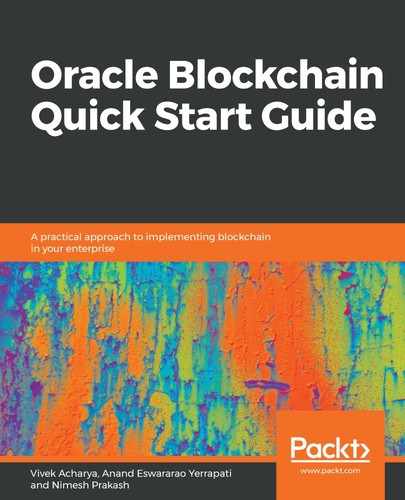Chaincode results in the creation of assets (key-value pairs) on the ledger, as HLF represents assets as key-value pairs. Assets state changes are recorded as transactions on the channel's ledger. There are few ways to represent assets—in binary or JSON form. For the university use case in this book, two assets are defined:
- One for student information
- Another for the certificate generated
This chapter includes the creation of basic assets and chaincode to enable quick learning of the development process. The inclusion of more assets and a comprehensive set of operations might lead to the investment of time in the modeling of the use case itself. Later, when you've experimented more with the use case, you can add more complexity to it.
Using the Go language, the following are the definitions of the two assets:
- An asset to define a certificate receiver:
|
Parameter |
Description |
|
assetType |
The type of asset, for example, a receiver |
|
receiver_id |
The ID of a receiver/student |
|
receiver_name |
The name of the receiver/student |
|
upload_org |
The organization/department of the certificate uploaded |
- An asset to define a certificate:
|
Parameter |
Description |
|
assetType |
The type of asset, for example, a certificate. |
|
Cert_id |
The ID of the certificate. |
|
Cert_no |
The number of the certificate. |
|
Cert_name |
The name of the certificate. |
|
Cert_receiver |
The receiver of the certificate. This will be fetched from the ledger by the given Cert_receiver_id parameter. |
|
Cert_receiver_id |
The ID of the receiver/student to whom this certificate is assigned. |
|
Cert_issuer |
The issuer of the certificate. |
|
Cert_industry |
The industry/department of the certificate. |
|
Cert_create_time |
The time the certificate was created at. |
|
Cert_update_time |
The time the certificate was changed if any changes are made. |
|
Cert_remark |
Remarks or comments on the certificate, if any. |
|
Cert_url_image |
The certificate image URL. |
|
Cert_learning_processing |
Certificate learning proceeding. |
|
Cert_status |
The status of the certificate. |
Chaincode is a software program (a group of smart contracts) or business logic that defines an asset and allows modifications to an asset (aka state changes). Any transaction (as allowed by chaincode) will result in a new set of an asset's key-value pair or the modification of an asset's key-value pair, or the deletion of an asset's key-value pair.
